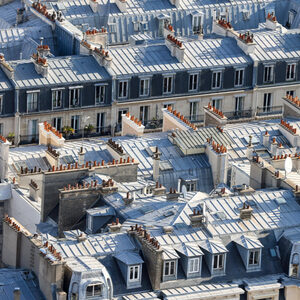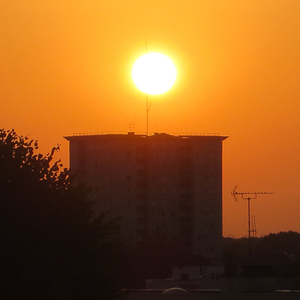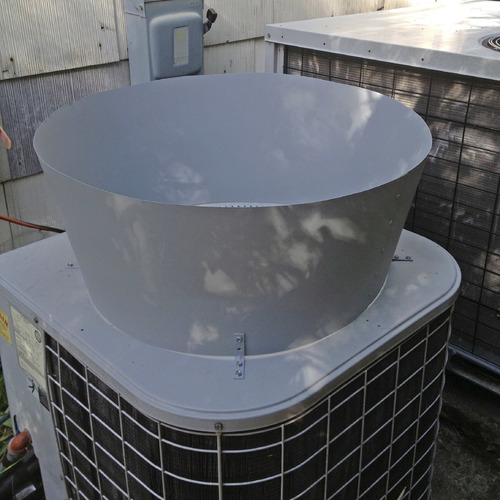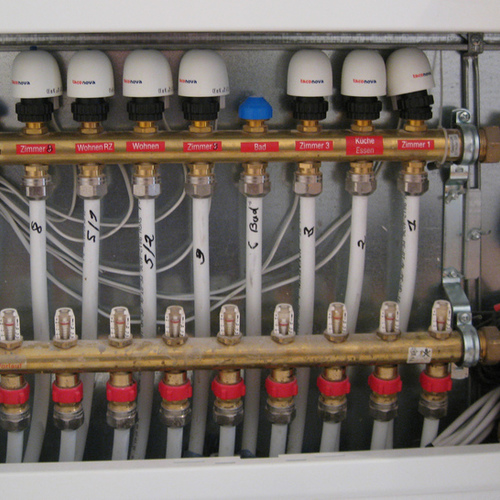
In July 2023, global temperatures reached new highs, driven by ongoing greenhouse gas emissions and supercharged by the warm phase of the El Nino–Southern Oscillation. Brutal heat waves gripped parts of Asia, the Mediterranean, and the Western and Southern U.S. As I write, more than 80 million Americans are under heat advisories. Phoenix, Arizona, set a new record for consecutive days with temperatures exceeding 110°F, at 26 and counting.
As the Earth warms, extreme temperatures are becoming more common. The Union of Concerned Scientists defines extreme heat as temperatures that are “exceptionally high relative to typical local conditions or reach levels that may be harmful to human health or infrastructure.” The threshold for extreme heat is lower in the Northern U.S., where high temperatures have been historically rare, than in the South.
A heat wave is a multi-day period of extreme heat. The frequency, duration, and intensity of heat waves have all increased over the last six decades. Northern states are not immune to deadly heat waves. A 1995 heat wave in Chicago caused more than 700 deaths over a five-day period; a 2021 Seattle heat wave was linked to 159 deaths.
Extreme heat poses a particular danger to young children, people over age 65, those with disabilities and chronic health conditions, those who work outdoors, and the unhoused. Impacts are particularly severe in low-income urban communities, intensified by a lack of tree cover, inefficient housing, and the cost of owning and operating air conditioners.
Seeking solutions
What can those who build and renovate homes do to mitigate and adapt to extreme heat? At the National Home Performance Conference in Seattle last April, I attended a talk by Christian Kaltreider and Theresa Gilbride, researchers at the Department of Energy’s Pacific Northwest National Lab (PNNL). Their team has compiled an extensive set of resources on extreme…
Weekly Newsletter
Get building science and energy efficiency advice, plus special offers, in your inbox.

This article is only available to GBA Prime Members
Sign up for a free trial and get instant access to this article as well as GBA’s complete library of premium articles and construction details.
Start Free TrialAlready a member? Log in















6 Comments
This is called "cherry picking your data": "The frequency, duration, and intensity of heat waves have all increased over the last six decades." If you go back 100+ years - and ignore the spike in the mid-1903s - the Heat Wave Index looks remarkably flat over that time period, save for the 1960s and 1970s where it was lower (I wonder why?). The "last six decades" was obviously picked as a starting point because it fits the conclusion the author wishes you to draw.
jadziedzic,
You mean the conclusion every reputable individual climate scientist and organization has also come to? I you don't want to believe in climate change, at least admit that's for ideological reasons, not drawn from data.
In any event, what does that have to do with the article, that is giving useful answers to how we cope with extreme heat, which you will have to admit is presently occurring, regardless of its cause?
Let me turn that question back to you, Malcom: What purpose does making a statement about "record heat" based on selectively chosen points on the Heat Wave Index serve in the article? And yes, it's a good article that would stand just fine by itself without the "past six decades" introductory statement.
jadziedzec,
You are quite right. I am so tired of dealing with the absurd and irrational arguments of climate change deniers that I just assumed you were heading in the same direction.
Please accept my apology.
The four stages of climate change denial, starting in the 80s/90s:
(1) It's not happening! There's no warming!
(2) Okay, it's happening, but it's not caused by human activity!
(3) Okay, it's caused by human activity, but it's beneficial, somehow.
(4) Okay, it's happening, and caused by human activity, and it's not beneficial, but addressing it would be too expensive (better for the economy to let all life on the planet die).
You're still stuck on #1. You haven't been paying attention, your fellow deniers are already on #4.
Your ad hominem attack in response to my criticizing the author for falling into the trap of using bad scientific method is a prime example of why it's so hard for us to get traction with "the masses" regarding climate change. Nothing I wrote made any statement about the reality/validity of climate change. (Back in my college days playing loose with a data set was a good way to flunk a lab session.)
I probably fall around step 6 or 7 on your "denier" grading scale: "Yep, I certainly see local effects of a changing climate*; what can I do to make a positive impact?" Quite a lot, actually, as I've been blessed and have worked hard. Specifically:
We've replaced my wife's ICE vehicle with a BEV vehicle: one less fossil fuel emission source on the road. (Sticking with an ICE vehicle replacement would likely have been cheaper in the long run and definitely in the short run.)
We're building a super-insulated all-electric house for our retirement home. I'm working with a younger builder who has not previously worked in the areas of high efficiency and/or green construction, but he's been open to working with us on our design. Several of the builders working in the same subdivision have also stopped by from time to time to check on the build. Maybe, just maybe, they'll have learned something from MY investment: perhaps some day they can convince their future buyers that better insulation and air sealing makes for a better investment than that 1500 CFM range hood the buyers think they need.
I bought copies of the "Pretty Good House" book for the builder and his partner, that should be worth a fraction of a point on the scale, right? ;-)
We're installing sufficient solar panels on our new house (based on our HERS rater's analysis) that we should be able to hit net zero status for the house and greatly reduce our dependence on (and drain on) the grid. I also added some extra panels to allow for possible future replacement of our remaining ICE vehicle. Even if that never happens, any surplus generation can help offset electricity usage by our neighbors.
That's a lot of Benjamins I could have spent (blown) elsewhere had I not wanted to leave things in a bit better shape for my descendants. Hopefully my grandchildren will see the return on my investment in their lifetimes.
Yep, I guess that all makes me a climate change denier - or possibly not, I guess the jury's still out on that one.
* Probably the best example in my own back yard is the decreasing interval between "ice in" and "ice out" at Lake Winnipesaukee, NH.
Log in or become a member to post a comment.
Sign up Log in